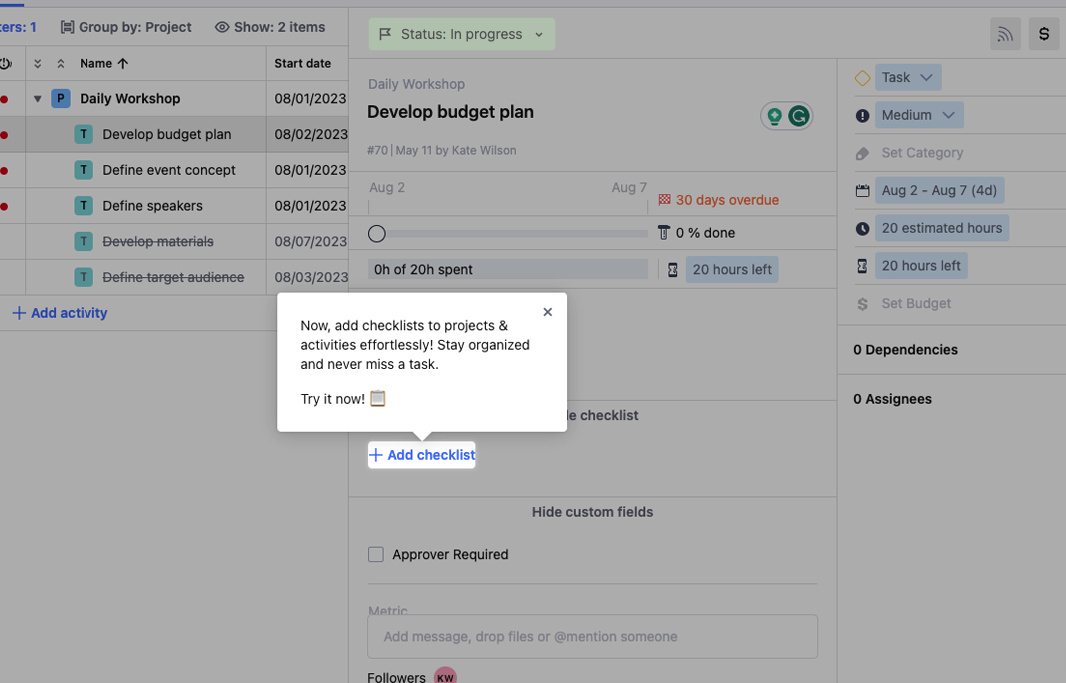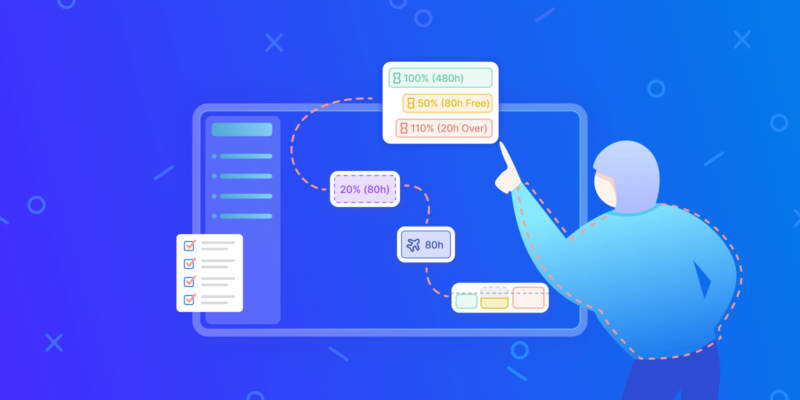Managing a project can sometimes feel like steering a ship through turbulent waters. The unpredictability of risks can derail even the most well-planned projects. That’s why effective risk identification is crucial for successful project management. By identifying potential risks early and developing strategies to mitigate them, you can ensure the project stays on track and experiences a sense of accomplishment with successful project management. Here, we explore the top risk identification techniques that can help you steer your project to success.
1. Brainstorming sessions
Brainstorming is a classic technique that brings team members together to generate ideas and identify potential risks. This collaborative method guarantees an extensive array of points of view, fostering a sense of unity and shared responsibility essential for comprehensive risk identification. Encouraging participants to think freely and share their thoughts can lead to identifying risks that might not be apparent to a single individual.
Integrating project management principles into brainstorming sessions enhances effectiveness by providing structured methodologies to organize and prioritize ideas. Aligning these sessions with project goals ensures that identified risks are relevant and actionable. Project management tools also aid in documentation and follow-up, systematically addressing potential risks as the project progresses.
Brainstorming sessions can be structured or unstructured. In a structured session, a facilitator guides the discussion, ensuring all team members have an opportunity to contribute. The conversation flows more freely in an unstructured session, sometimes leading to unexpected insights. Regardless of the format, the goal is to generate as many potential risks as possible without evaluating them immediately. This phase is about quantity, not quality.

2. SWOT analysis
This structured method is a valuable tool for identifying internal and external risks. By analyzing the strengths and weaknesses of your project and the opportunities and threats in the external environment, you can get a comprehensive view of potential risks.
According to a study from Statista, SWOT analysis remains a valuable tool for strategic planning in project management. For instance, a project might have a strength in a highly skilled team but a weakness in outdated technology. Opportunities include new market trends, while threats could be competitive pressures. By categorizing these elements, you can anticipate potential issues and develop strategies to address them.
3. Checklists
Checklists are a robust risk identification tool, ensuring no potential risk is overlooked. Based on previous project experiences, they often provide a structured way to identify common risks. Tailoring the checklist to the specific project can further enhance its effectiveness.
To create a practical checklist, review documentation from previous projects, and consult with experienced team members. Identify common risks in similar projects and add them to the list. During the project, regularly review the checklist to ensure all potential risks are monitored and addressed.

4. Expert interviews
Engaging with experts who have experience in similar projects can provide invaluable insights. These experts can help identify risks based on past experiences and suggest mitigation strategies. This technique is beneficial for complex projects where in-house knowledge may be limited. Experts can provide a different perspective and highlight risks that may take time to be apparent to the project team.
When conducting expert interviews, prepare a list of questions to guide the discussion. Focus on areas where you need more knowledge or experience. Encourage experts to share their experiences and insights and share follow-up questions to investigate specific risks. Insights from Harvard Business School highlight the importance of expert judgment in risk management.

5. Delphi technique
This approach involves a panel of experts who anonymously respond to questionnaires. Their responses are then aggregated and shared with the group until a consensus is reached. This method helps gather opinions and identify potential risks through structured communication. The anonymity of the responses ensures that the experts can express their views freely without being influenced by others.
This technique benefits projects involving significant uncertainty or without a clear consensus on potential risks. By iterating the process and refining the responses, the Delphi technique can help project managers identify and prioritize risks more effectively.
6. Root cause analysis
RCA focuses on identifying the underlying causes of potential risks. Understanding the root causes lets you develop strategies to prevent these risks from occurring. This technique is beneficial for addressing complex issues with multiple contributing factors. RCA involves a systematic approach to identifying and addressing the root causes of risks rather than just treating the symptoms.
To conduct an RCA:
- Start by defining the problem and gathering data.
- Use tools like the “5 Whys” or fishbone diagrams to identify the root causes.
- Once the root causes are identified, strategies will be developed and implemented.
- Track the efficiency of these methods and adjust as needed.
7. Assumption analysis
This analytical method involves examining the assumptions made during the project planning phase. Identifying which assumptions are uncertain or likely to change can help pinpoint potential risks. This proactive approach ensures that the project plan is robust and adaptable. By challenging assumptions, project managers can identify areas of uncertainty and develop strategies to address potential risks.
To perform an assumption analysis:
- Start by listing all the assumptions made during the project planning phase.
- For each assumption, assess its validity and the potential impact if it proves false.
- Develop contingency plans for critical assumptions and regularly review and update them as the project progresses.
8. Nominal group technique
This method shares similarities with brainstorming but involves structured steps to ensure everyone’s input is considered. Participants individually write down their ideas, which are discussed and prioritized as a group. This technique helps identify a comprehensive list of risks and prioritize them effectively.
In a nominal group session, start by posing a question to the group. Each participant writes down their ideas independently. Once everyone has finished, the ideas are collected and discussed as a group. The group then votes on the most critical risks, which are prioritized based on the results.
9. Scenario analysis
Scenario analysis involves creating detailed scenarios of potential future events and assessing their impact on the project. This technique helps visualize how different risks could unfold and allows the project team to develop contingency plans for various scenarios. Project managers can be better prepared for unexpected events by considering a range of possible futures.
To conduct a scenario analysis:
- Pinpoint the key variables that might influence the project.
- Create a range of scenarios based on these variables.
- Analyze the potential impact of each scenario and prepare contingency plans accordingly.
- Regularly review and update the scenarios as the project progresses and new information emerges.
10. Monte Carlo simulation
By leveraging statistical methods, Monte Carlo simulation allows for the estimation of different outcomes’ probabilities. Project managers can utilize this technique to simulate various risk factors, enabling them to predict the chances of specific risks occurring and to evaluate their potential impact on the project. This approach provides a data-driven way to assess risks, supporting informed decision-making throughout the project.
To conduct a Monte Carlo simulation:
- Begin by identifying the key risk factors and determining their probability distributions.
- Conduct numerous simulations to model a range of possible outcomes.
- Examine the results to pinpoint the most probable risks and their potential effects.
- Leverage these insights to formulate strategies for managing the identified risks.
Project Risk Management 101
Integrating risk identification techniques
Combining several risk identification techniques to achieve the best results is often beneficial. For instance, you can start with brainstorming sessions to gather initial ideas, use SWOT analysis to structure these ideas, and then conduct expert interviews to validate and refine the identified risks. This integrated approach ensures a comprehensive risk management plan.
Combining techniques can also help identify risks from different perspectives. For example, brainstorming might reveal risks a SWOT analysis cannot capture, while expert interviews can provide insights not evident in a checklist. Using multiple techniques, project managers can ensure they thoroughly understand potential risks and are well-prepared to address them.
Conclusion
Successfully managing a project depends heavily on the ability to identify risks. Utilizing techniques like SWOT analysis, brainstorming sessions, expert interviews, and checklists enables you to proactively recognize and address potential risks before they become issues. Remember, early identification and strategic planning are the keys to managing risks. Implementing these techniques will help keep your project on track and enhance your reputation as a competent project manager.
For those looking for comprehensive tools to manage their projects, consider exploring the best project management tools available. These tools can assist in identifying risks and monitoring and controlling them throughout the project lifecycle.



